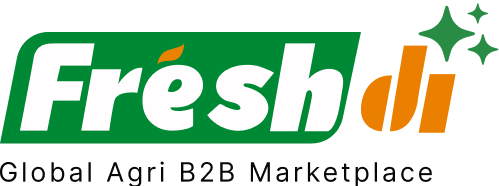Introduction – Current State of Play: The Rice Sector in Kenya
The Rice market in Kenya is undergoing rapid transformation in 2025, shaped by a mix of local and global developments. From new government policies aiming to boost local production to international trade deals unlocking import opportunities, the landscape is shifting fast. For businesses involved in sourcing, distributing, or selling rice, staying ahead of these changes isn’t just smart—it’s essential.
In early Q3 2025, Kenya signed a bilateral trade agreement with India, reducing tariffs on rice imports, which has significantly influenced market pricing and supply volumes. At the same time, a prolonged dry spell in Kenya’s key rice-producing regions such as Mwea and Ahero has led to a dip in domestic output. This has put added pressure on importers and logistics providers to fill the supply gap quickly and efficiently.
With more consumers demanding quality rice varieties like Jasmine and Basmati, and retailers racing to stabilize inventories, the current environment requires agility and accurate market intelligence. Platforms like Freshdi have become indispensable, offering supplier verification, live RFQ trends, and up-to-date demand analytics to help buyers make better decisions, faster.
Deep Dive – What’s Making Headlines? Key Recent News & Impacts
Several headline developments are currently reshaping the rice sector in Kenya:
-
New India-Kenya Trade Pact: In July 2025, Kenya finalized a trade agreement with India, lowering import duties for non-GMO rice. This move aims to curb inflation and stabilize food prices domestically.
-
Weather-Driven Supply Pressures: Eastern Kenya, particularly Mwea and Ahero irrigation schemes, have reported below-average rainfall. This has slashed local paddy yields by an estimated 20% compared to Q2.
-
Increased Demand for Premium Varieties: There’s a growing consumer preference for high-grade rice types like Jasmine and long-grain Basmati, driven by urbanization and changing dietary patterns.
-
Government Subsidy Programs: To support small-scale millers, the Kenyan government launched a subsidy initiative in August 2025. This includes tax relief and easier access to credit, which could boost local production in Q4.
These changes are impacting not only the supply chain but also buyer behavior. Businesses need to pivot quickly—re-evaluating supplier contracts, diversifying sourcing partners, and tracking price trends in real time.
Top 4 Verified Rice Suppliers in Kenya – Navigating Current Market Realities
Sourced from the Freshdi platform, these suppliers have demonstrated strong performance, reliability, and excellent buyer feedback in Q3 2025. They are vetted for export readiness, certifications, and ability to respond to current supply-chain challenges.
1. Kupaci Procurement Enterprise
Kupaci Procurement Enterprise is known for its robust supply chain and access to both local and imported rice varieties. They’ve been quick to adapt to the new India-Kenya import framework, ensuring timely deliveries and competitive prices.
- Specializes in: Jasmine, Basmati, and local pishori rice.
- Strengths: Dynamic pricing models, real-time RFQ updates on Freshdi.
- Buyer Feedback: Consistently rated high for delivery accuracy and packaging.
2. Olly Enterprises
Olly Enterprises has scaled up its logistics infrastructure in 2025 to tackle the supply disruptions caused by drought. Their integration with Freshdi has enabled better forecasting and smoother transactions.
- Specializes in: White long-grain rice, mixed broken rice.
- Strengths: Reliable export logistics, responsive customer service.
- Buyer Feedback: Praised for flexibility in order quantities and speedy dispatch.
3. Boma Rice Millers Ltd.
Based in Central Kenya, Boma Rice Millers Ltd. is a legacy player with decades of experience. Despite the production setbacks, they’ve maintained strong supply through contract farming and early procurement.
- Specializes in: Mwea pishori, milled and semi-milled rice.
- Strengths: Local sourcing, government-compliant milling practices.
- Buyer Feedback: Commended for consistent quality and traceable sourcing.
4. Bleffice Enterprise Limited
Bleffice Enterprise Limited has surged in popularity this quarter due to their high-grade Jasmine rice offering. Their sourcing from both local and Indian suppliers provides buyers with options depending on market conditions.
- Specializes in: Premium Jasmine and Basmati rice.
- Strengths: Multi-origin sourcing, fast customs clearance.
- Buyer Feedback: High marks for grain quality and aroma retention.
Dynamic Ranking Note: These rankings reflect supplier activity and buyer ratings as of Q3 2025. Platforms like Freshdi offer dynamic leaderboards such as “Suppliers of the Month” or “Top Exporters of the Quarter,” which highlight real-time performance shifts based on verified metrics.
Market Navigation – Strategic Responses to The Current Rice Landscape in Kenya
So, how should businesses respond to all these changes?
Reevaluate Your Supplier Mix
With Indian rice now cheaper to import, it may be time to rebalance between local and international sources. Companies should consider blending strategies—sourcing bulk from Indian suppliers but relying on Kenyan suppliers like Boma for premium quality.
Risk Mitigation: Watch the Weather
Kenya’s erratic climate is now a supplier risk factor. Businesses should monitor rainfall data and crop forecasts. Tools on Freshdi can help by alerting buyers to supply-side risks through RFQ trend shifts.
Adjust Product Focus
Given rising demand for Jasmine and Basmati rice, it might be wise to focus marketing and stocking efforts on these varieties. Suppliers like Bleffice and Kupaci are already aligned with this shift.
Regional Considerations
The Central and Western regions of Kenya are currently more stable in terms of rice output. Buyers should prioritize suppliers based in these regions or those with diversified sourcing strategies.
Short-Term Outlook (Q4 2025)
Expect continued volatility in local production, but increased volume of imports from India and Pakistan may stabilize prices. Businesses should use Freshdi’s RFQ dashboards to track pricing trends and plan procurement accordingly.
Conclusion – Key Takeaways for Businesses in a Rapidly Evolving Market
Q3 2025 has been a whirlwind for the rice industry in Kenya. From lowered import duties to local production dips and shifting consumer preferences, the rice landscape is being reshaped in real time. Businesses that stay informed, agile, and connected to reliable suppliers will come out on top.
Here’s what matters most:
- Keep an eye on trade policies and weather reports—they’re your early warning system.
- Focus on suppliers with multi-origin capabilities and good buyer feedback.
- Use platforms like Freshdi to access real-time market insights, verify supplier credentials, and monitor RFQ trends.
- Reassess your rice variety portfolio—premium grains are winning in urban markets.
- Don’t go it alone—modern sourcing is a team sport, and digital platforms are your best teammate.
Buyer’s Checklist – Sourcing Rice in Kenya (Q3 2025 Edition)
- ✅ Have I reviewed the latest trade agreements affecting import costs?
- ✅ Am I sourcing from both local and international suppliers to hedge risks?
- ✅ Are my preferred suppliers verified and rated on Freshdi?
- ✅ Do I have alerts set up for RFQ changes and market shifts?
- ✅ Am I prioritizing rice varieties that are in high demand (e.g., Jasmine, Basmati)?
Future Outlook – What’s Next for Rice in Kenya?
Looking ahead, the rice market in Kenya is poised for continued evolution. With expected rainfall in Q4, local production may rebound slightly. However, international dynamics—such as India’s export policies and global shipping costs—will remain influential. Tech-forward suppliers and informed buyers will have the upper hand. Freshdi is expected to roll out AI-powered sourcing recommendations soon, making it even easier for businesses to adapt to market shifts.
How Freshdi Empowers Buyers
Freshdi isn’t just a marketplace—it’s a smart sourcing engine. Here’s how it’s helping rice buyers in Kenya:
- Real-time RFQ analytics tied to market news.
- Verified supplier profiles with performance history.
- Regional and product-specific insights.
- Notifications on major policy and weather updates.
- Dynamic supplier leaderboards based on buyer feedback.
Whether you’re a wholesaler, retailer, or food manufacturer, Freshdi helps you make confident, data-driven choices in a fast-moving market.
FAQs
1. What’s causing the rice price fluctuations in Kenya in 2025?
Primarily, it’s a mix of reduced local yields due to drought and new trade agreements that have shifted import dynamics. The demand for premium rice varieties is also pushing prices up.
2. Is it better to source rice locally or import in Q3 2025?
A mix of both is ideal. Local suppliers like Boma Rice Millers offer traceability and freshness, but imports from India are now more cost-effective due to the new trade deal.
3. How can I verify a rice supplier in Kenya?
Use platforms like Freshdi that offer verified supplier profiles, buyer reviews, and performance metrics.
4. What rice varieties are in highest demand right now in Kenya?
Jasmine and long-grain Basmati are leading in demand, especially in urban retail markets.
5. How often do supplier rankings on Freshdi change?
They’re dynamic and updated regularly based on export volume, buyer ratings, and activity levels. You can check the “Supplier of the Month” section for the latest updates.


